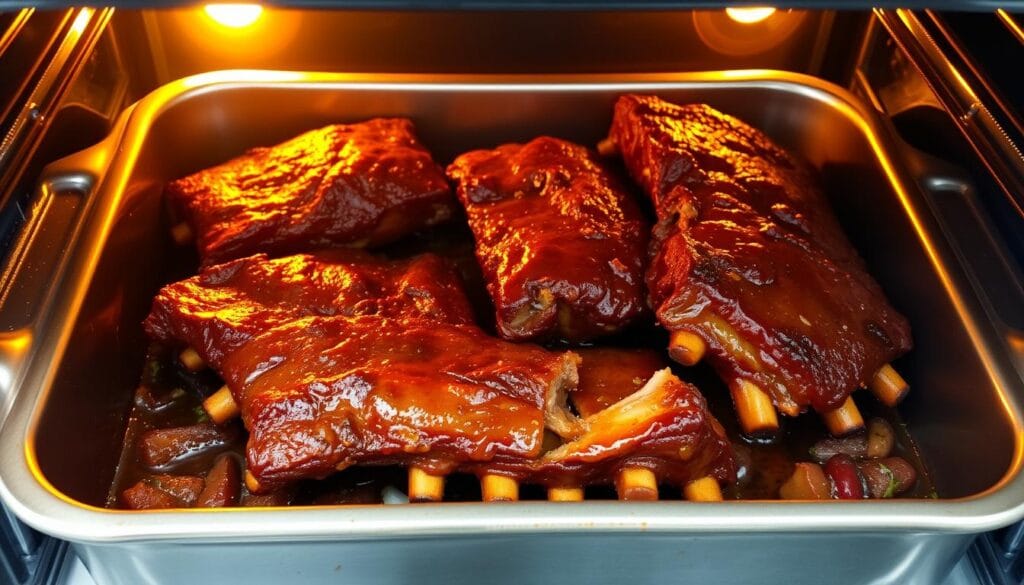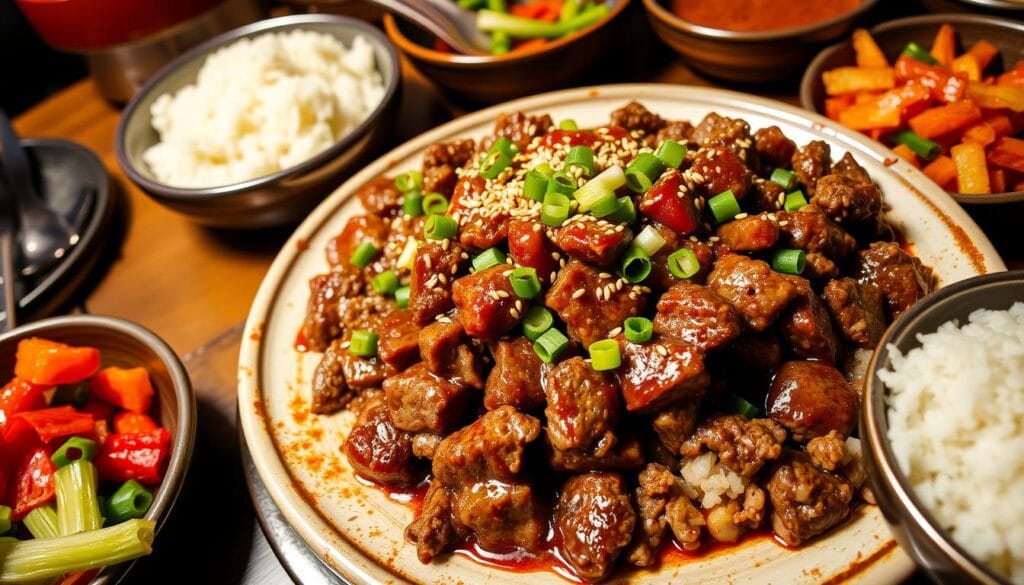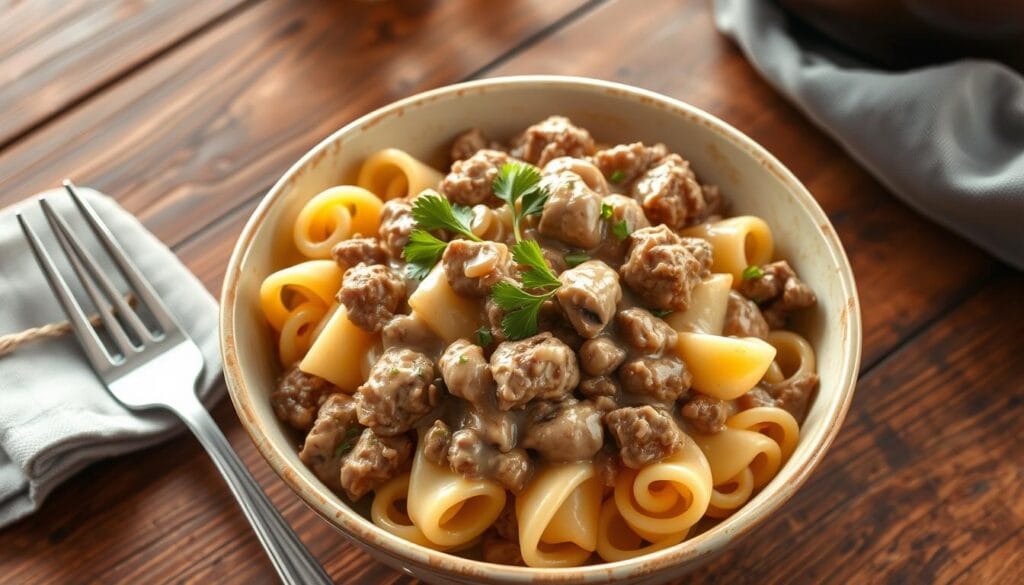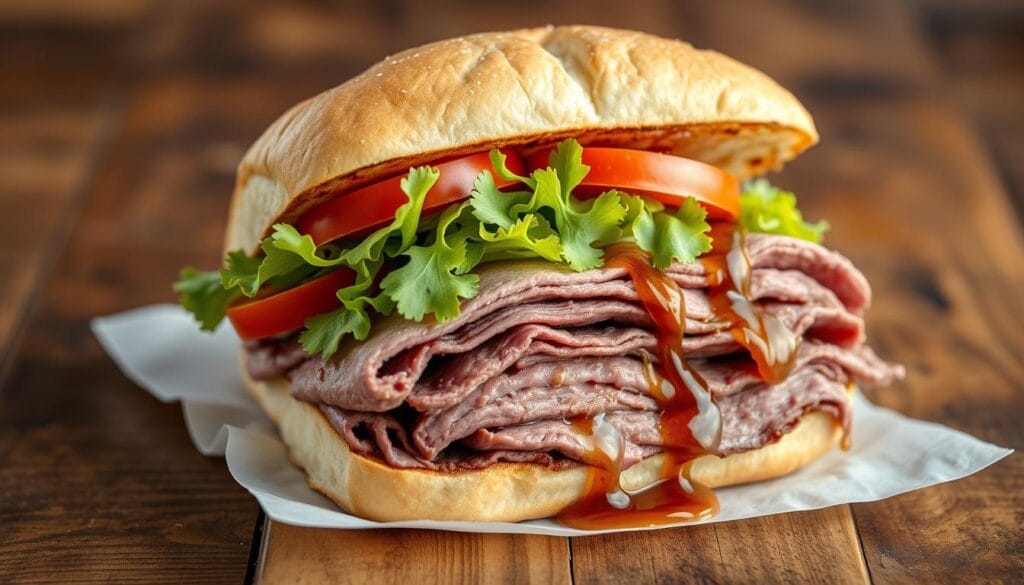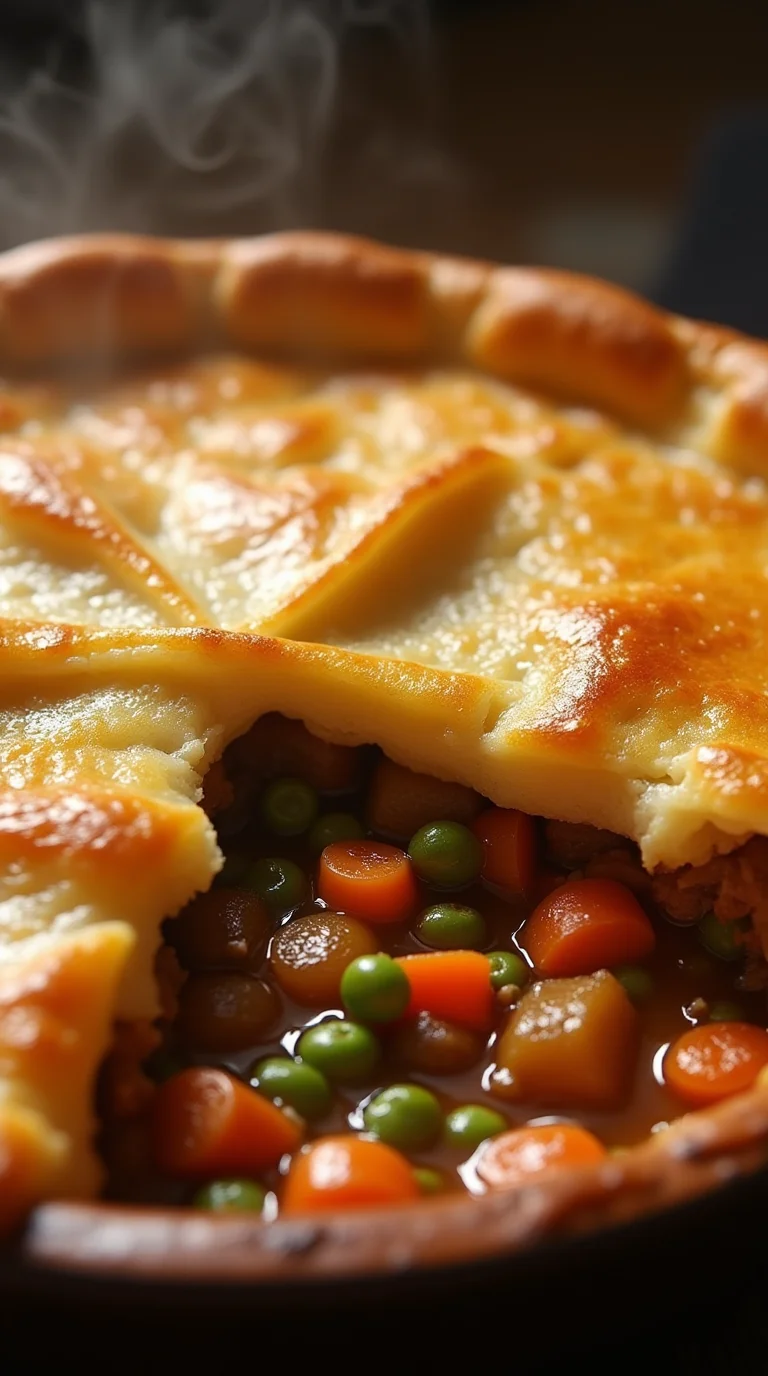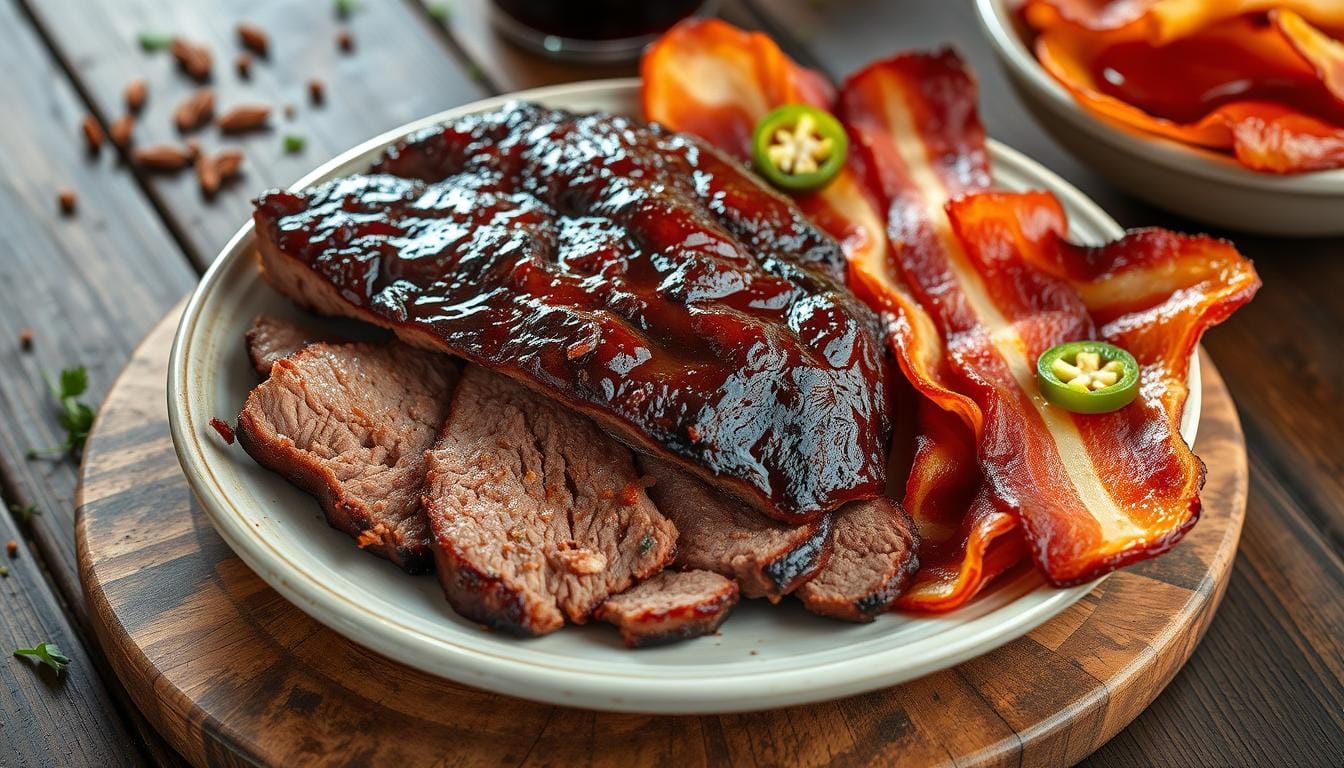Do you ever find yourself craving a meal that feels like a warm embrace? A dish that isn’t just sustenance, but a memory woven into the fabric of your life? For many, that meal is a classic beef meatloaf.
It’s a sensory experience that begins the moment the savory, rich aroma fills your kitchen, promising a comforting and deeply satisfying dinner.
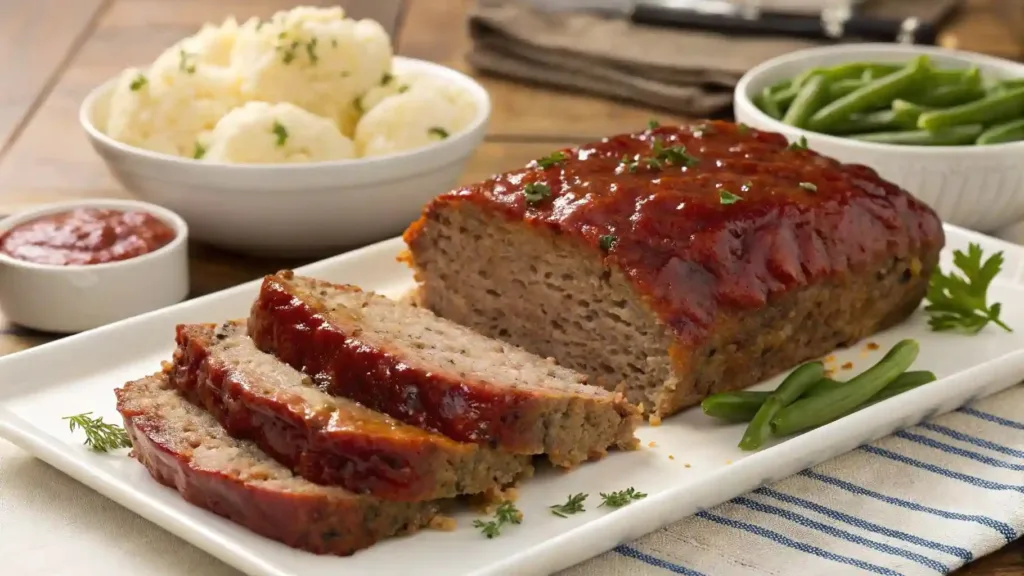
This isn’t merely a recipe; it is a guide to recapturing that feeling, to creating a centerpiece for your family table that will be remembered and requested for years to come.
We will reveal the secrets to crafting a meatloaf that is tender, juicy, and brimming with the kind of flavor that only a true comfort food masterpiece can deliver.
Section 1: The Foundation: What Makes a Classic Beef Meatloaf So Good?
Before you even start mixing ingredients, the success of your meatloaf is determined by the quality of your choices. Every great creation rests on a solid foundation, and with a dish as straightforward as meatloaf, the ingredients you select are paramount.
This section is your playbook for building a masterpiece from the ground up, focusing on the fundamental components that will define your final product.
Choosing the Right Ground Beef for Your Meatloaf
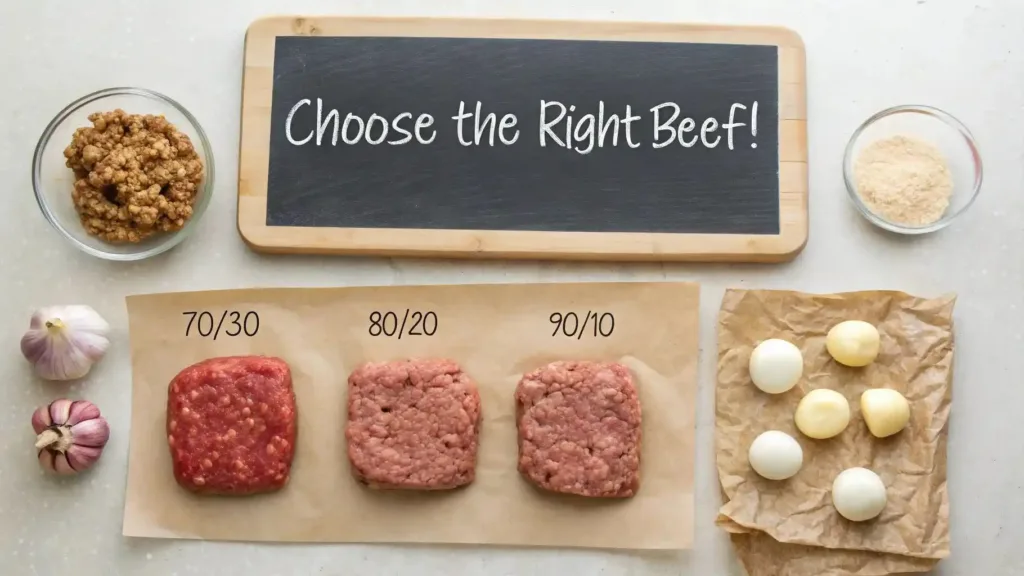
The single most crucial decision you will make is selecting your ground beef. While a myriad of options exists at the butcher counter, the key to a moist and flavorful meatloaf lies in the fat content. You might be tempted to reach for the leanest option, thinking it’s the healthiest choice. However, doing so is a common misstep that leads to a dry, crumbly loaf.
The ideal ratio for a classic beef meatloaf is 80/20. This means the meat is 80% lean and 20% fat. This proportion strikes a perfect balance: the fat melts during the baking process, infusing the loaf with moisture and richness, while the lean meat provides the structural integrity it needs to hold its shape.
Ground chuck, sourced from the shoulder muscles, is an excellent cut for this purpose, as it naturally contains this golden ratio and offers a deep, beefy flavor. For a truly superior result, consider asking your local butcher to grind the meat for you.
Freshly ground beef has a texture and taste that pre-packaged options simply cannot match.
The Essential Binders: Keeping Your Meatloaf Together
Binders are the unsung heroes of the meatloaf world. They are the components that prevent your loaf from collapsing into a pile of seasoned beef. The two main players here are breadcrumbs and eggs.
- Breadcrumbs: These absorb the moisture from the meat and other ingredients, swelling to create a tender, uniform texture. You have options here: traditional breadcrumbs work well, but many chefs prefer panko breadcrumbs. The larger, flakier structure of panko creates a lighter, less dense meatloaf. To ensure your meatloaf is incredibly moist, you should always soak your breadcrumbs in a liquid, such as milk, before adding them to the mixture. This step allows the breadcrumbs to absorb the liquid fully, preventing them from drawing moisture out of the meat as it bakes.
- Eggs: Eggs serve a dual purpose. They act as a powerful binding agent, helping the meat, breadcrumbs, and seasonings adhere to each other. They also contribute to the overall moisture of the loaf, ensuring a rich and succulent interior. A general rule of thumb is to use one large egg per pound of ground beef.
A Symphony of Flavors: Key Seasonings and Aromatics
A plain meatloaf is a missed opportunity. The magic of a classic beef meatloaf lies in its ability to be a canvas for a blend of simple, yet potent, flavors. These seasonings and aromatics are what transform a simple dish into a memorable culinary experience.
- The Foundation of Flavor: Start with the basics: salt, black pepper, onion powder, and garlic powder. These create the savory base for your meatloaf.
- Fresh is Best: While powders are convenient, incorporating finely minced fresh onions and garlic will elevate your dish to another level. As they cook, they release a more complex, robust flavor. Be sure to chop them very finely to ensure they disperse evenly throughout the meatloaf and don’t create large, noticeable chunks.
- The Signature Tang: For that classic, slightly sweet and savory profile, you need a liquid element mixed directly into the loaf. A dash of Worcestershire sauce adds a deep, umami-rich layer, while a tablespoon or two of ketchup or chili sauce mixed into the meat provides a subtle sweetness and acidity that perfectly complements the beef.
Section 2: Step-by-Step Guide: How to Make the Best Classic Beef Meatloaf
With your foundation secured, it’s time to assemble your creation. The process is straightforward, but following these steps carefully will guarantee a meatloaf that is consistently excellent. This isn’t about being overly meticulous; it’s about respecting each stage of the process to achieve a superior outcome.
Preparing Your Ingredients and Mixing the Meatloaf
- Preheat and Prep: Begin by preheating your oven to 350°F (175°C). Decide if you will use a loaf pan for a traditional shape or form a free-form loaf on a baking sheet lined with parchment paper. A free-form loaf allows for more surface area to caramelize, resulting in a crispier crust.
- Combine the Binders: In a large bowl, whisk together your eggs and milk. Add the soaked breadcrumbs and let them sit for a few moments to absorb the liquid fully.
- Introduce the Aromatics and Seasonings: Add your finely minced onions, garlic, and all your chosen seasonings (salt, pepper, powders, and sauces) to the binder mixture. Stir until everything is well combined.
- The Gentle Fold: Now, it’s time to add the ground beef. The most critical instruction here is to mix gently. Use your hands to lightly combine the ingredients until everything is just incorporated. Overworking the meat will compress the proteins, resulting in a dense, tough texture. You want a tender, yielding loaf, not a hockey puck.
Forming and Baking the Perfect Loaf
- Shape Your Loaf: If using a loaf pan, gently press the mixture into the pan, ensuring it’s evenly distributed. If you’re going for the free-form method, shape the mixture into a uniform loaf on your prepared baking sheet. Aim for a loaf that is no more than three inches high to ensure it cooks evenly.
- Bake to Perfection: Place your meatloaf in the preheated oven. A 2-pound loaf will typically take 60-75 minutes. The true sign of doneness, however, is not the clock but the internal temperature. Use an instant-read meat thermometer to check the center of the loaf. It is done when it reaches an internal temperature of 160°F (71°C).
- The Crucial Rest: Once you remove your meatloaf from the oven, do not cut into it immediately. This is a common error. Allow it to rest for at least 10 minutes. This resting period allows the juices to redistribute throughout the loaf, guaranteeing that every slice is moist and flavorful. Cutting it too early will cause those precious juices to spill out, leaving you with a dry, disappointing result.
The Secret to a Great Glaze
The glaze is the crowning glory of a classic beef meatloaf. It adds a beautiful sheen, a layer of flavor, and helps to lock in moisture.
- A Simple, Sweet Glaze: A basic and incredibly effective glaze can be made by combining ketchup, a touch of brown sugar, and a splash of apple cider vinegar. The brown sugar adds sweetness and aids in caramelization, while the vinegar provides a necessary tang to cut through the richness of the beef.
- When to Apply: Apply the glaze during the final 15-20 minutes of baking. This timing allows the glaze to caramelize without burning, creating that beautiful, slightly sticky, and deeply flavorful crust.
Section 3: Beyond the Basics: Meatloaf Variations and Serving Suggestions
Once you have mastered the classic beef meatloaf, you can begin to explore a universe of variations. The beauty of this dish is its adaptability. You can easily modify the base recipe to suit your taste or what you have on hand.
Delicious Variations to Your Classic Beef Meatloaf
- “Cheesy Goodness”: For an undeniably decadent twist, create a tunnel down the center of your loaf before baking and fill it with shredded cheddar or mozzarella cheese. The melted cheese creates a delicious, gooey surprise in the middle of your loaf.
- “The Italian Job”: Infuse your meatloaf with a taste of the Mediterranean. Add Italian seasoning, grated Parmesan cheese, and a handful of chopped sun-dried tomatoes to the meat mixture. Serve it with a marinara sauce instead of the traditional glaze.
- “Mushroom Lovers”: For a deeper, earthy flavor, sauté finely minced mushrooms with your onions and garlic before adding them to the meat mixture. This adds a wonderful umami depth and an extra dose of moisture.
What to Serve with Your Classic Beef Meatloaf
A great meatloaf deserves equally great partners. The perfect side dishes complement the rich flavor of the beef and create a complete, satisfying meal.
- Creamy Mashed Potatoes: This is the quintessential pairing. The fluffy, buttery texture of mashed potatoes is the perfect foil for the hearty meatloaf.
- Green Vegetables: To add a touch of freshness and color, serve with steamed green beans, roasted broccoli, or a simple side salad.
- Pan Gravy: Don’t let those flavorful pan drippings go to waste. After the meatloaf has rested, you can create a simple, rich gravy right in the same pan. A quick roux of flour and butter, deglazed with beef broth, will yield a sensational gravy to pour over your meatloaf and mashed potatoes.
Section 4: FAQ’s About Classic Beef Meatloaf
You may have some lingering questions, especially if this is your first time tackling a meatloaf. Let’s address some of the most common inquiries to ensure your experience is nothing short of perfect.
Why is my classic beef meatloaf dry?
This is the most frequent complaint. The primary culprits are using ground beef that is too lean (always aim for 80/20), over-mixing the meat, or not using enough liquid in your binder mixture. Over-baking can also cause dryness, which is why a meat thermometer is your best friend.
Can I make Classic Beef Meatloaf ahead of time?
Absolutely. You can prepare the raw meatloaf mixture and store it in your loaf pan or an airtight container in the refrigerator for up to 24 hours. When you are ready to bake, just take it out, let it come to room temperature while your oven preheats, and bake as directed.
How do I store and reheat leftover Classic Beef Meatloaf?
Leftovers are one of the best parts of making a meatloaf. Store slices or the entire loaf in an airtight container in the refrigerator for 3 to 4 days. When reheating, the microwave is an option, but for the best results, wrap a slice in foil and reheat it in a 300°F (150°C) oven until it is warmed through. This prevents it from drying out.
Can I freeze Classic Beef Meatloaf?
Yes, it freezes wonderfully. You can freeze the raw mixture, well-wrapped, for up to 3 months. When you are ready to use it, thaw it in the refrigerator overnight and bake as usual. You can also freeze the cooked and cooled loaf. Wrap it tightly in plastic wrap and then foil, and it will last for 2-3 months. To reheat from frozen, place the foil-wrapped loaf in a 350°F (175°C) oven until it is hot in the center.
Conclusion: A Timeless Tradition
Making a classic beef meatloaf is an act of love and a connection to a timeless culinary tradition. It’s about more than just combining ingredients; it’s about crafting a memory, a moment of shared comfort and satisfaction around the dinner table. We hope this guide empowers you to create a meatloaf that not only tastes incredible but also becomes a treasured part of your family’s story.
Now, it is your turn. We invite you to try this recipe, to put your own spin on it, and to bring that feeling of warmth and home into your kitchen. Share your own meatloaf stories and photos in the comments below. What is your secret to the perfect loaf? What side dishes do you serve with your masterpiece? We are building a community of home cooks, and your contribution is the next chapter in this delicious story.
